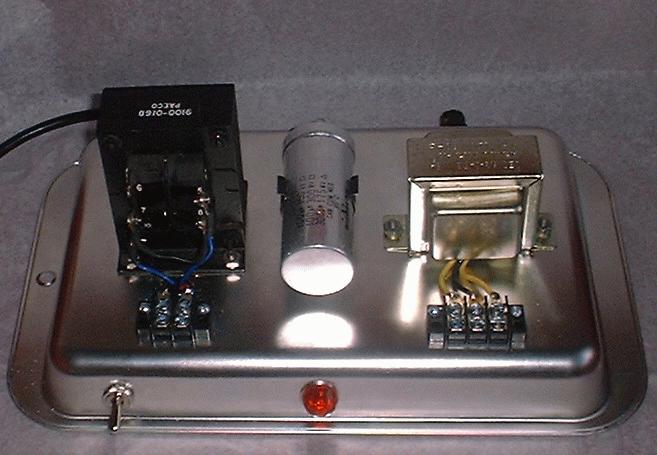

CAUTION! This project involves exposed high-voltages. These voltages can be dangerous or even lethal. I don't suggest you attempt to match my construction--there are safer ways to build this. Dangerous voltages are exposed at several points on this supply. And only those with adequate training, equipment, facilities and experience should attempt to construction of this type of equipment. You can kill yourself! This information is believed to be accurate, but please verify and understand what you are doing before undertaking this type of effort.
In late 2001 I became seriously interested in vacuum tube (valve) circuits. I could play around with some circuits that used the small tubes designed for portable battery service with my bench supply, but I knew that serious experimentation would require a better power source.
I wanted to build a power supply with a 'retro' look. I didn't want a replica, but I did want to capture some of the feel the homebrew gear of the 1940s or 1950s might have. To that end, the supply is built on an inverted cake tin I bought at the grocery store. It has a metal toggle switch and a large red pilot light on the front panel.
There are really two supplies here. For the heaters, there is a center-tapped 12.6 volt AC supply. A RadioShack transformer (on the right) was used to supply this voltage.
The second supply is a high-voltage DC supply. I used a transformer (on the left) from Fair Radio. It has two center-tapped 50 volts AC outputs. Using these in series I can take the voltage off at 25, 50, 75, or 100 volts AC. The AC voltage is fed into a full wave rectifier and 500 uF of capacitance (the can capacitor on top of the supply).
I was going to use a choke to further filter the supply, but I found that the choke I had put back for the project wasn't suitable for the currents I wanted to draw. So I decided to use a voltage regulator (LM317) to reduce the ripple. The LM317 is designed for 30-something volts maximum, so there is some careful engineering required to make this work. Don't try this without a careful study of the LM317, its applications in high-voltage circuits, its failure modes, etc..
To adjust the DC voltage, I first select the appropriate AC tap. Then I can use the LM317 to take out any ripple and adjust the voltage down a bit if I want to. With the 500 uF of capacitance I usually only have to drop the voltage two or three volts to be absolutely ripple free at the currents typically found in tube circuits. I'm able to get voltages anywhere from about 40 volts all the way up to 170 volts. I figure I'm safe to 250 mA or so, but usually draw much less than this.
Overall this project was a blast. I like the way it looks and I'm having fun playing with tubes. I was going to build in a low-voltage supply to take some of the 6.3 VAC and give me 1.5 or 3.0 VDC for use with the tubes designed for battery use. Instead of cramming it in, I decided to build an outboard regulator. I figure I can put this in a small project box and just use it in-line from the heater supply.
Copyright © 2001-2009 by Jim McClanahan All rights reserved.
All trademarks and brands are the property of their respective owners.